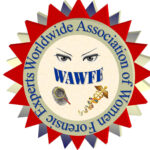DNA Analysts Can Prevent and Correct Wrongful Convictions
Home » DNA Analysts Can Prevent and Correct Wrongful Convictions
- Session
DNA Analysts Can Prevent and Correct Wrongful Convictions
- September 20, 2023 //
- 9:20 am -
- 9:40 am //
- Hyatt Regency at the Colorado Convention Center, Centennial Ballroom
The National Registry of Exonerations reported that misleading forensic evidence is a prominent factor in wrongful convictions. Because DNA evidence resonates with jurors, even small mistakes have large effects. For example, when male DNA is reported in a “sperm fraction”—even though no sperm are present—the profile is referred to as “sperm DNA” by lawyers and investigators. Another example is when a DNA comparison is reported “inconclusive” even though a negative likelihood ratio favors the defendant (but doesn’t meet the lab’s reporting standards). Analyst’s reports are used by prosecutors, defense lawyers and accused people (often in jail) to make life-changing decisions regarding charges, pleas and offers. At trial, DNA analysts may face ineffective or misleading questioning that can deny jurors critical information. This presentation uses case examples, expert testimony and exonerations to review common DNA practices that risk wrongful conviction. As co-director of the Idaho Innocence Project, the presenter has helped free more than 40 people from wrongful convictions, published research on bias in DNA interpretation, and offers suggestions to prevent and correct DNA errors.
The National Registry of Exonerations reported that misleading forensic evidence is a prominent factor in wrongful convictions. Because DNA evidence resonates with jurors, even small mistakes have large effects. For example, when male DNA is reported in a “sperm fraction”—even though no sperm are present—the profile is referred to as “sperm DNA” by lawyers and investigators. Another example is when a DNA comparison is reported “inconclusive” even though a negative likelihood ratio favors the defendant (but doesn’t meet the lab’s reporting standards). Analyst’s reports are used by prosecutors, defense lawyers and accused people (often in jail) to make life-changing decisions regarding charges, pleas and offers. At trial, DNA analysts may face ineffective or misleading questioning that can deny jurors critical information. This presentation uses case examples, expert testimony and exonerations to review common DNA practices that risk wrongful conviction. As co-director of the Idaho Innocence Project, the presenter has helped free more than 40 people from wrongful convictions, published research on bias in DNA interpretation, and offers suggestions to prevent and correct DNA errors.


